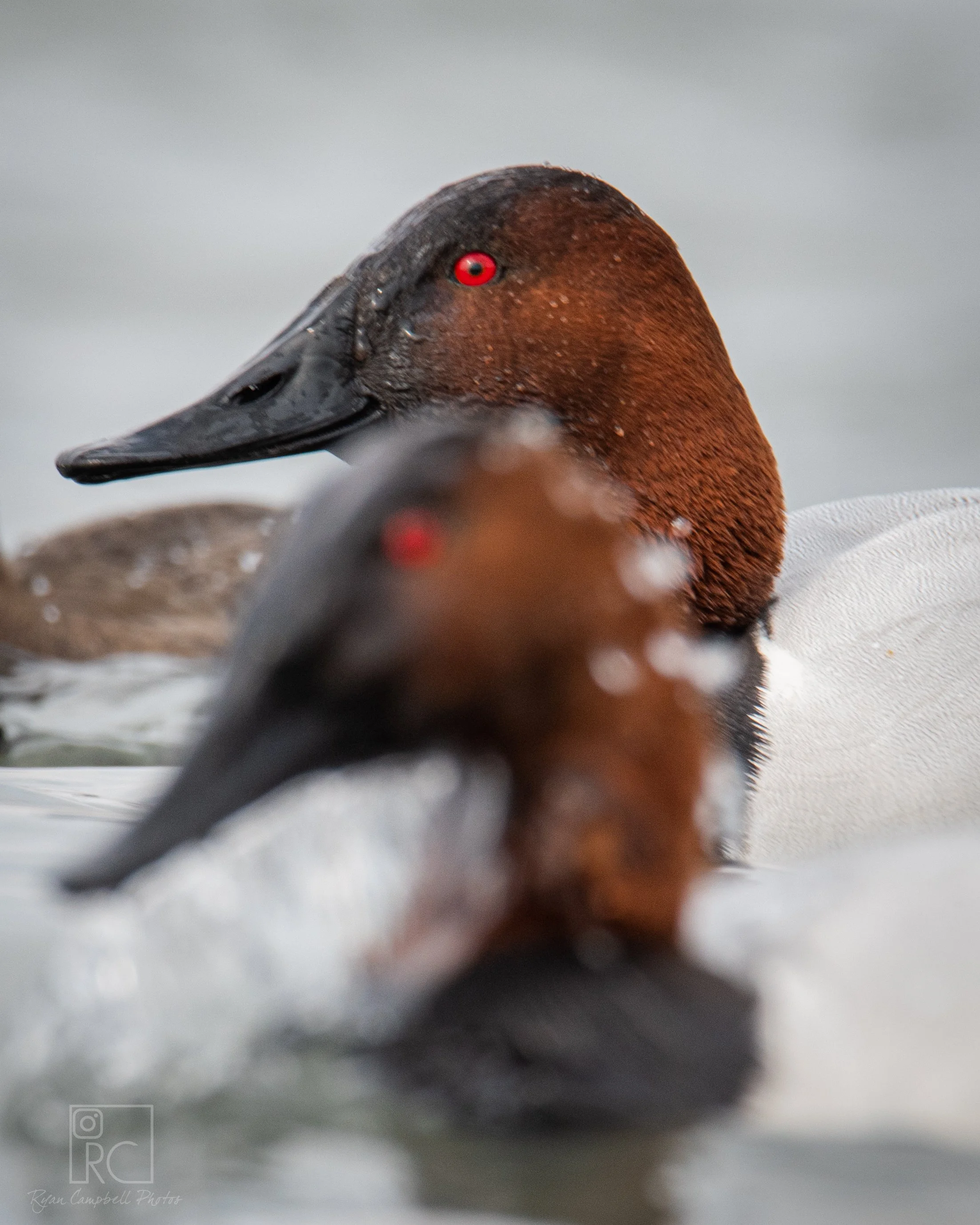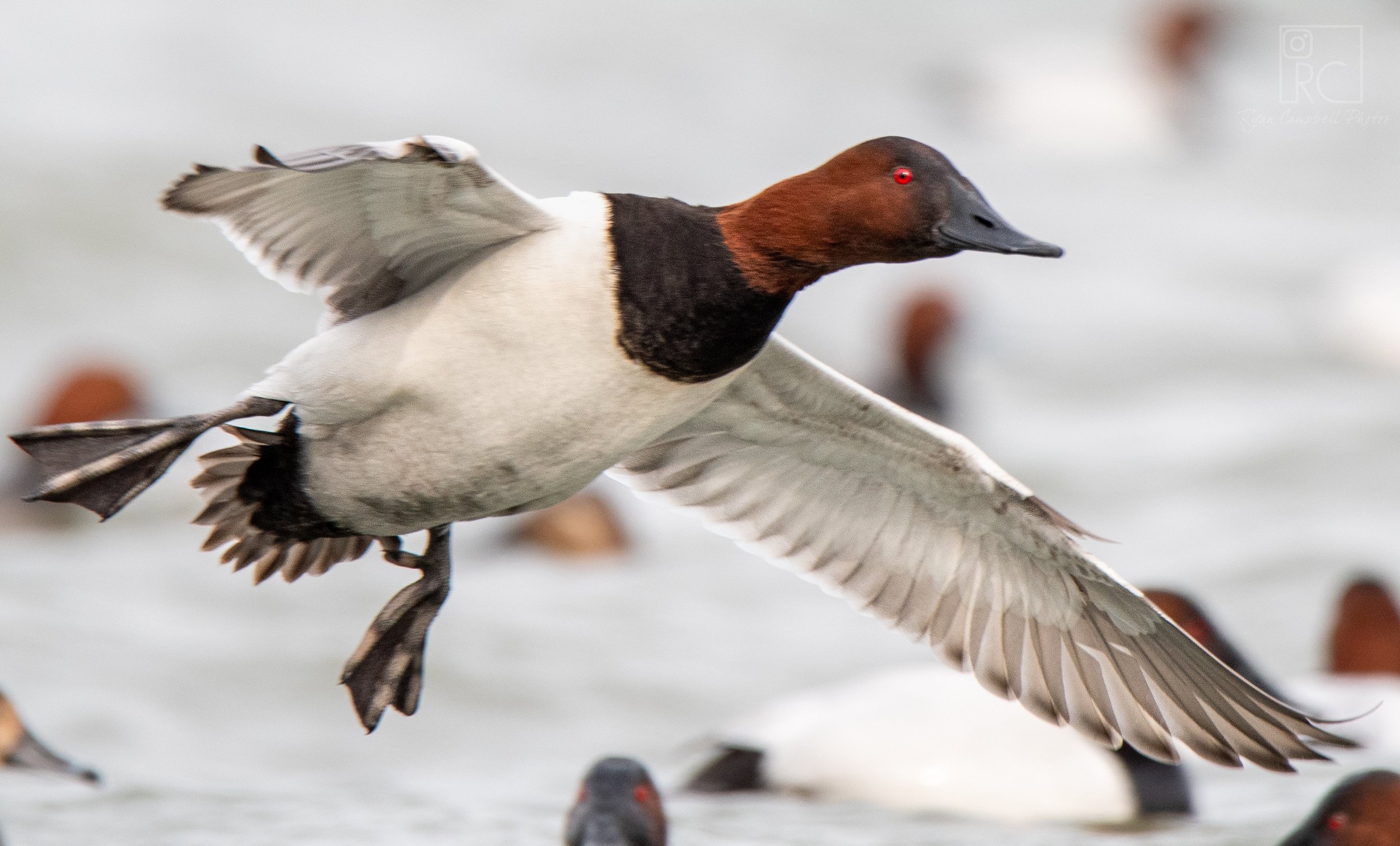Lake Seminole Canvasbacks
Hayden Martin for SPLIT REED
Cover photo Ryan Campbell
When the topic of hunting in the state of Georgia is discussed, the thought process immediately diverts to turkey hunting as that is what Georgia is primarily known for. For duck hunters in the search of a canvasback drake, there is one location that has become the answer to their quandary. Tucked away in the southwest corner of the state on the Florida-Georgia line is Lake Seminole, where waterfowl hunters in pursuit of “The King'' will converge.
Home to one of the largest wintering populations of canvasbacks in the southeast, this 38,000 acre reservoir also offers ringnecks, redheads, lesser scaup, and everyone’s favorite, the infamous coot. However, on Lake Seminole, canvasbacks will often be found in and amongst large spreads of coots, which changes the way decoy spreads are set up. These particular spreads are highly utilized on the lake as the canvasbacks tend to spend their time mixed in with the rafts of coots more so than on their own.
Ben Williams of Savannah, Georgia, has been hunting Lake Seminole since childhood and over the years, he has observed different ways hunters have gone out of their way to harvest a canvasback drake and has combined several methods to have successful hunts. “For anyone not familiar with the area, this lake is a challenge to hunt. If you’re not hunting with a local outfitter, you need to scout before your hunt so you are able to navigate across the water safely. Between the submerged stumps and the hydrilla as well as multiple areas that scream, ‘oh, that is the spot,’ Seminole is a doozy. Just about every time I go out on the lake, I use a layout boat on the open water while running a diver and coot heavy spread. I utilize a gag-line and will run between six to twelve canvasback decoys per line off of the layout boat in a ‘V’ formation in and around the coot decoys. I have seen some hunters go back in the sloughs and get their boat motor filled with hydrilla, which is not worth the hassle.”
Lake Seminole presents several unique hazards that hunters need to be aware of. Hydrilla is an aquatic weed that has been a hot discussion between waterfowl hunters and water resource managers since its discovery in the lake. The weed provides an excellent food source for migrating ducks to feed on, however, it grows quickly, displaces native plants, and easily gets caught in boat motors, which leads to the submerged stumps. During the scouting trip, map out a safe path in and around the stumps to avoid running your boat and motor into them on the ride out to the morning hunt. “Since Lake Seminole is located on the Florida-Georgia line with the Chattahoochee River splitting the states, you will often see law enforcement from both states on the water. Depending on where you put in and where you set up, it would be a good idea to have a hunting license from both states so you’re covered. Most of the birds will be down here between the middle of December through early January, so one of the last things you want to deal with in that weather is not having the proper licenses which will lead to problems none of us want to have during duck season.”
After all is said and done, Lake Seminole offers an exclusive opportunity to harvest a canvasback drake in the southeastern United States. Whether you are looking to complete the North American Waterfowl Slam, switch it up from puddle ducks to diver ducks, or a different location to hunt, this memorable area of the country is worth checking out!



